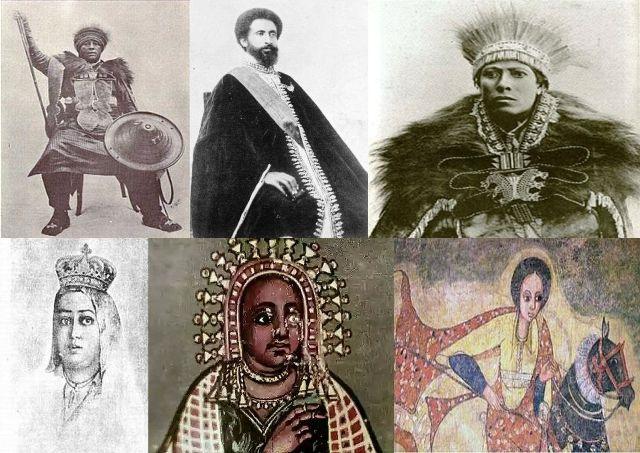
Ethiopia's Most Famous Historical Figures
Ask any Ethiopian about their country's history and they will proudly recite the many historical facts of their ancient nation.Ethiopia indeed has a history that goes back thousands of years, but there is a reason why Ethiopia is what it is today.
Ethiopians have the right to be proud of their ancient nation's history.
It is a country that has many "firsts" and "onlys". For example, it is the first and only African country that put a definite end to a colonizing European country's efforts.
The following list contains 25 of the most important people in Ethiopian history.
Among the 25 historical figures that are presented here, there are heroes, emperors, empresses, kings, queens, and much more.
Without the actions and deeds of the following heroic people; Ethiopia today would be one that would be unrecognizable by the modern inhabitants of this land.
Directly or indirectly, each and every one of these people has contributed to the greatness that is Ethiopia.
1. Emperor Kaleb
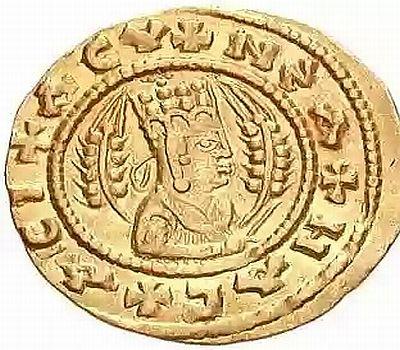
Ethiopia served as a national interface between the two eastern superpowers of the time - namely Byzantium and Persia.
The Aksum-based emperors of Ethiopia at this time were also very eager to establish a link with their long-time Christian counterparts in Greece and Istanbul (modern-day Turkey).
During this time, many Christian merchants of Byzantinian citizenship were also...
2. Fitawrari Habte Giorgis/Giyorgis Dinagde
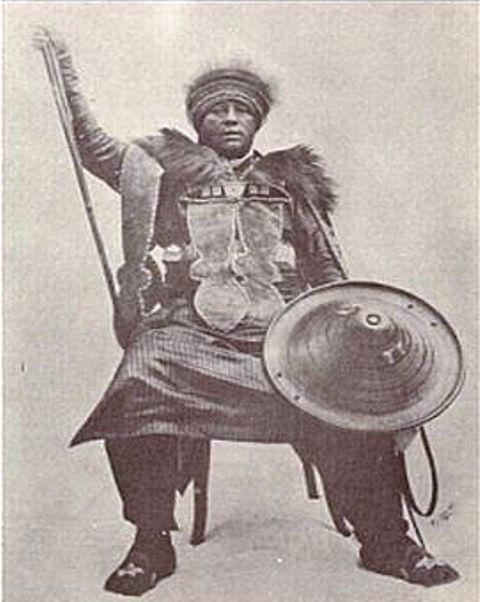
Fitawrari Habte Giyorgis was an Ethiopian military commander and government official...
He was a member of the Chebo people, in a mixed Oromo and Gurage family...
Had he not been loyal to Emperor Menelik, he had the power and influence to crown himself after the overthrow of Lij Iyasu...
He was an important figure in the Ethiopian Empire often cited for his great skills as military commander and judiciary...
Fitawrari Habte-Giorgis was known for being a wise statesman who played a vital role in Ethiopian politics...
3. King Lalibela

Gebre Mesqel Lalibela was a great king of the Zagwe dynasty whose reign lasted forty years...
In a vision, King Lalibela saw that he was to build a new Jerusalem after the old...
Lalibela's greatest achievement undoubtedly lays in the eleven monolithic churches he constructed in his new capital city...
4. Colonel Abdissa Aga
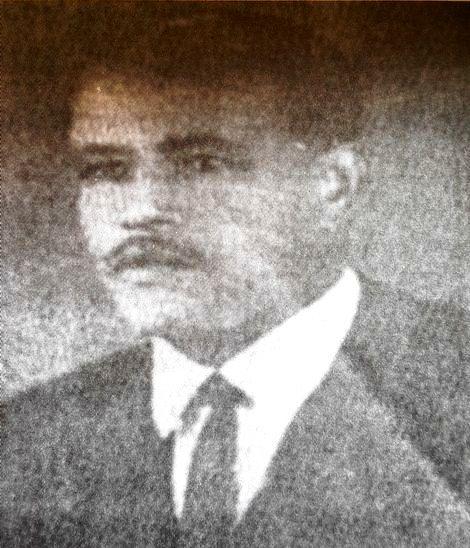
Colonel Abdissa Aga the great was a true Ethiopian Hero of Oromo descent...
He was chosen to lead the international army of partisans which consisted of Americans, English, French, Ethiopians and other nationals...
The British made him the Commander of the British Military Police and sent him to Germany to fight against the German Army.
He battled with the German Nazis in different cities, defeated them, controlled the cities and villages, and entered Berlin triumphantly again waving Ethiopian and British flags.
He was in the spot light all over the world...
5. King Ezana
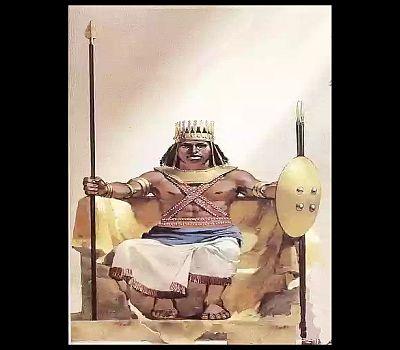
Ezana was a prominent ruler of the Kingdom of Axum...
Ezana also expanded trade-his coins have been found in India-and conducted military campaigns that brought the Kingdom of Kush, including the city of Meroe on the banks of the Blue Nile, under Axumite control...
King Ezana made his greatest imprint on Axum when he officially adopted Christianity as the state religion. He appointed Frumentius head of the church...
6. King Zara Yaqob

Zara Yaqob was an embarrassment on the battlefield....
On one of these occasions, after firing all government officials, he appointed a nearly all-female administration....
Yaqob took the name Constantine I and set about transforming the church. He announced new doctrines and cast aside the old, outdated orthodoxies...
7. Abba Jiffar II
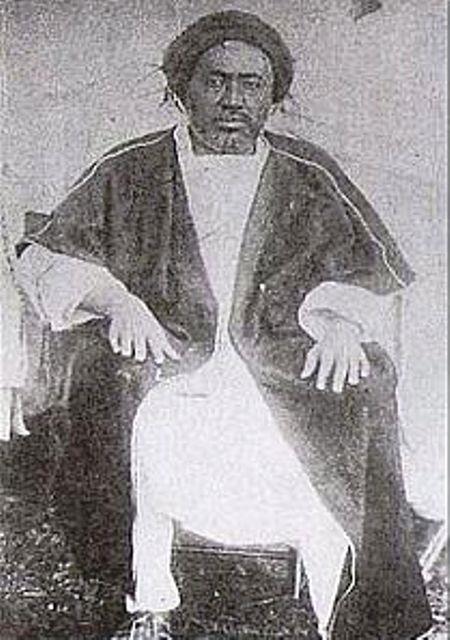
image credit: wikipedia.org
He was the Muslim ruler of Jimma (1875 - 1934) who led his kingdom under the supremacy of the Ethiopian Empire...
8. Mohammed Ali aka Negus Mikael
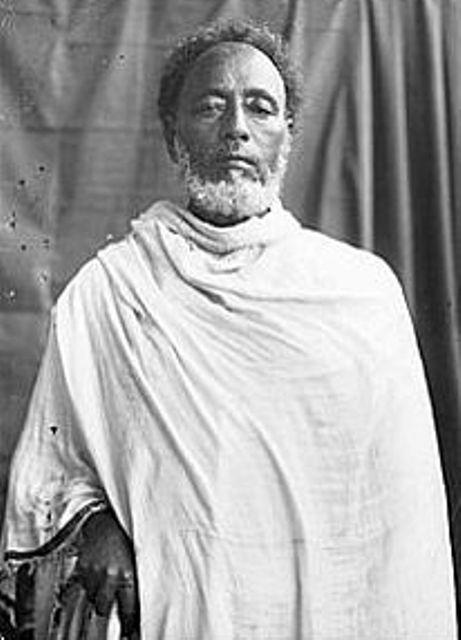
Mikael of Wollo (1850 - 8 September 1918), born Imam Mohammed Ali, was an army commander and a member of the nobility of the Ethiopian Empire.
He was the father of the "uncrowned" Emperor Iyasu V.
He changed his name to Mikael upon converting to Christianity. Mohammed Ali was born in Wollo. His father was Oromo-Somali
9. Emperor Menilik II

image credit: wikipedia.org
Emperor Tewodros II conquered Shewa and imprisoned Menelik in his mountain stronghold at Magdala...
With the help of some close allies, however, Menelik engineered a daring escape from Magdala...
He immediately received a baptism of fire...
Menelik and Ethiopia enjoyed a new era of prosperity and power...
developed strong diplomatic ties with other countries, especially Russia...
10. Emperor Amda Seyon

Amda Seyon emerged from unclear origins with an uncertain ancestry to become the most dominant emperor of the early Solomonic dynasty...
In the 14th century, through his military crusades, he controlled the Horn of Africa...
Seyon prepared for his invasions by transforming the imperial army shortly after he came to power.
He organized it into specialized regiments, each of which was led by an elite commander...
11. Empress Mentewab

image credit: wikipedia.org
Mentewab rose from these origins to become one of the most powerful women in Ethiopian history.
She became the second wife of Emperor Bakaffa in 1722...
Her power is made clear in the opulent additions to the Royal Enclosure at Gondar built under her direction: her own castle, a lavish banqueting hall, and, in the mountains outside the city at a site called Qusquam, a church to the Virgin Mary...
12. Emperor Fasilides

A powerful emperor of the Solomonic dynasty who ruled in the 17th century, Fasilides took the throne name 'Alam Sagad', meaning 'he to whom the world bows'...
Catholics and Jesuits didn't fare as well under Fasil's rule...
He burned Catholic writings and banished missionaries of both sects...
Fasilides is best known, however, for his grand buildings and public works projects...
He established Gondar in 1635, made it Ethiopia's new capital city, and built the palace complex that became the Royal Enclosure, Fasil Ghebbi...
13. Emperor Tewodros II
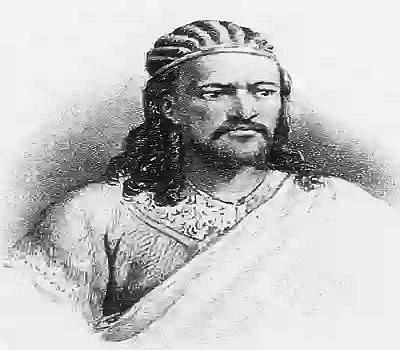
Born with the name Kassa Hailu, Tewodros II took a throne name equivalent to the English name Theodore.
He was one of Ethiopia's most notable emperors, being revered by modern Ethiopians as the first modern leader and the man who unified the various kingdoms into one empire.
He also tried to modernize the military, showing a special interest in new technology...
Tewodros also created Ethiopia's first professional standing army, doing away with the old method of raising a new army from the provinces every time a new campaign or war started...
14. Queen of Sheba
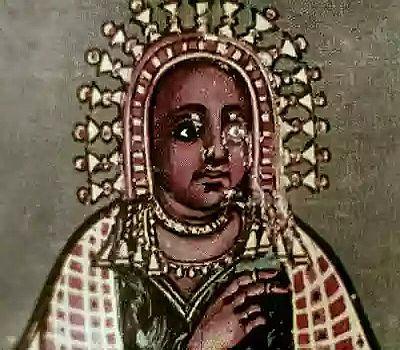
image credit: sourcememory.net
Makeda, as she is known in Ethiopia, ruled over the land of Sheba or Saba, an ancient kingdom situated in modern-day Yemen and Ethiopia.
During the 10th century B.C.E. Queen Makeda, intrigued by stories of King Solomon's wisdom, worship of the God of Israel, and perhaps concerned by his country's burgeoning sea trade, which competed with Sheba's terrestrial trade caravans, resolved to pay him a visit...
15. Ras Alula Abba Nega
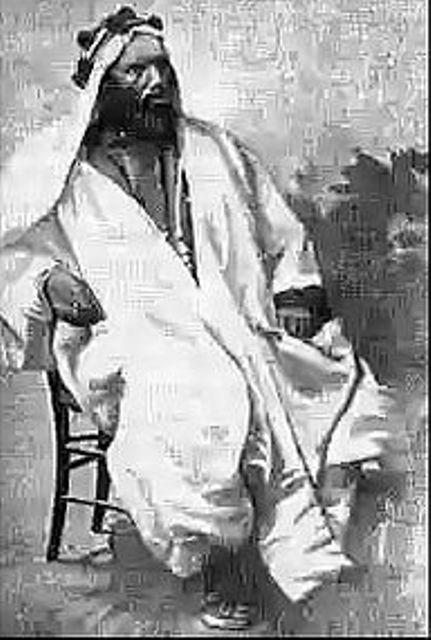
image credit: wikipedia.org
Despite many aristocrats' resentment at the young Alula's favor with the emperor, the new general proved his worth.
His army scored impressive victories at Kufit, Dogali, and Gallabat as Ethiopia fought to remain independent of European colonial powers...
Ras Alula's greatest moment came at the Battle of Adwa in 1896, where the Ethiopians, who were the most united in defense of their country against a common enemy as had ever been the case in their history...
16. Emperor Haile Selassie
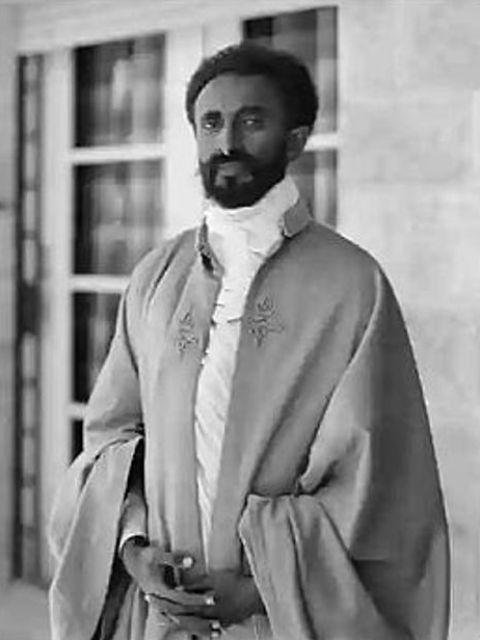
image credit: mdolecki.wordpress.com
Restored to his capital in World War II, he obtained for Ethiopia a coastline on the Red Sea.
He skillfully courted foreign economic aid, strove to improve education, squashed an attempted coup
Despite the anachronisms of his person and the archaicisms of his country, he emerged as an elder statesman of African anticolonialism.
The prestige and power of Haile Selassie, waxing over more than a half century, made of him a personage larger than life. With a splendid sense of theater, he lived up to, and even surpassed, the role in which he was cast...
17. Amir Abdullahi

The Amir was the last independent ruler of Harar (1885-1887) before it's fall to the Shewa Kingdom...
Harar remained an independent, theocratic state, until, it was occupied in 1875 by the Egyptians, who killed its ex-ruler, Amir Abd al-Shakur...
The Egyptian rule lasted only a decade, after which Amir Abdullahi took over, only to be defeated in 1887 by King (later Emperor) Menelik, after which Harar became an integral part of the Ethiopian Empire...
18. Kawo/King Tona Gaga

He lays claim as being the last King of the Kingdom of Wolayta.
Many believe he was one of the most skilled warriors and the most powerful king of Wolayta.
His army defeated King Menelik's forces six times before losing to the combined force of Menelik and Aba Jafar in 1896...
19. Negus/King Tekle Haymanot Tessemma
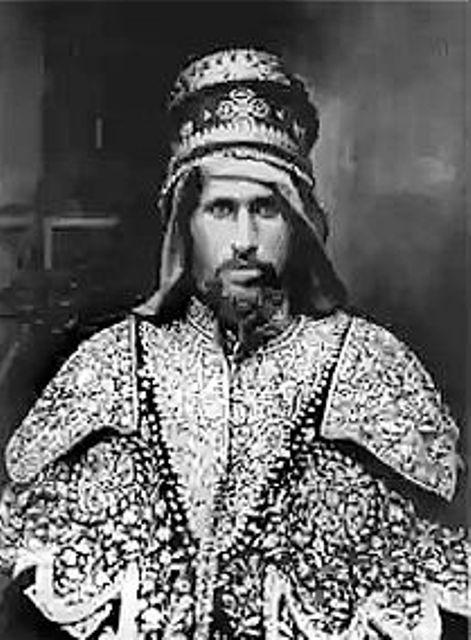
Sensing a shift in power, Negus Tekle Haymanot Tessemma negotiated a defensive alliance with Menelik.
After Menelik secured Gojjam and Begemder, Yohannes ordered him to return to Shewa.
In September 1888, when Tekle Haymanot Tessemma refused to contribute forces to the efforts of Yohannes against Mahdist who had re-entered western Gojjam, Yohannes suspected Tekle Haymanot and Menelik of plotting against him.
To destroy the power of Tekle Haymanot, the army of Yohannes laid waste to much of Gojjam.
As a result of the destruction, Tekle Haymanot submitted to Yohannes...
20. Queen Yodit/Gudit or Judith
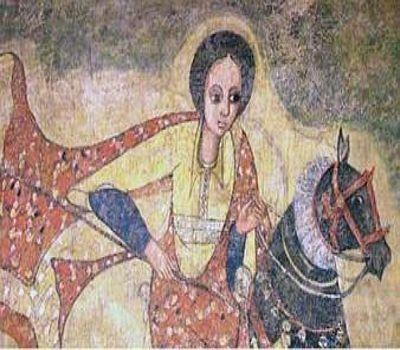
Gudit, Gwedit, Yodit or Judith, Queen (perhaps 10th century A.D.), also known in Amharic as 'Esato and in Teltal as Ga'Ewa, was a rebel leader to whom the downfall of the ancient Aksumite Empire is traditionally ascribed...
In addition to oral tradition there is considerable documentary evidence that c. 970 A.D. the ruling Aksumite dynasty was harassed by a non-Christian queen, who lay waste to the city and countryside, destroyed churches and monuments and sought to exterminate all members of the royal family, the House of David...
21. Empress Taitu Betul

image credit: twitter.com/liyanatefferi
Not only was she the first lady of Ethiopia behind the mighty Emperor as a proud African history was made at Adwa, she was also alongside the Ethiopian army at the...
In 1889, she collaborated with Emperor Minilik to establish Addis Ababa as the nation's capital.
And it was Taitu who gave Addis Ababa its name.
When Minilik's health began to decline around 1906, Taitu started making decisions on his behalf...
22. Empress Candace/Kandake
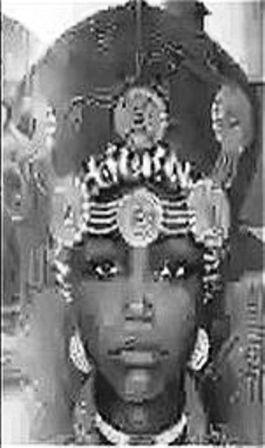
One of the greatest generals of the ancient world was also the Empress of Ethiopia...
This formidable black Queen Candace, was world famous as a military tactician and field commander...
Legend has it that Alexander the Great could not entertain even the possibilty of having his world fame and unbroken chain of victories marred by risking a defeat, at last, by a woman...
He halted his armies at the borders of Ethiopia and...
23. Emperor Yohannes IV

His attempt to use religion as the basis for unity ignited resistance, particularly from Muslims who were ordered to build churches, pay tithes, and eventually be baptized.
After the Egyptians had advanced into Ethiopia, Emperor Yohannes drew them into battle and beat them resoundingly once at Gundat in 1875 and again at Gura in 1876.
His victories not only ended any Egyptian desires on the territory, but also brought him much captured weaponry turning his army into the first well-equipped military force in Ethiopian history...
24. Prince Alemayehu
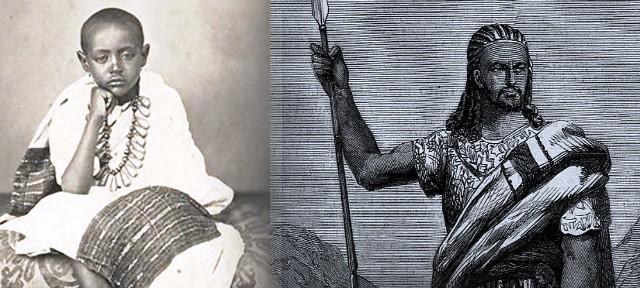
image credit: face2faceafrica.com
Emperor Tewodros II's wife, Empress Tiruwork, and his young son and heir, Prince Alemayehu, were captured and order was given to take them to England.
Empress Tiruwork died on the journey to the coast and was buried at Sheleqot Monastery in the Tigrai province of Ethiopia.
Prince Alemayehu made the journey alone but grew increasingly lonely in imposed exile in England.
Prince Alemayehu was only 7 years old when his father committed suicide. The Prince was very close to his father who...
25. Dejazmach Balcha Safo or Aba Nefso

Balcha is believed to be of Oromo descent; 'Balcha' means 'taming, assimilating or making familiar with' in Afaan Oromo...
But there are also many Gurage people who use Oromo names because of their geographical assimilation with the Oromo...
Dejazmatch Balcha and his army encamped at Nifas Silk, just outside the city, and the presence of Balcha's large Army was regarded as being a direct challenge to the king, in support of the Empress and the conservatives she supported...
